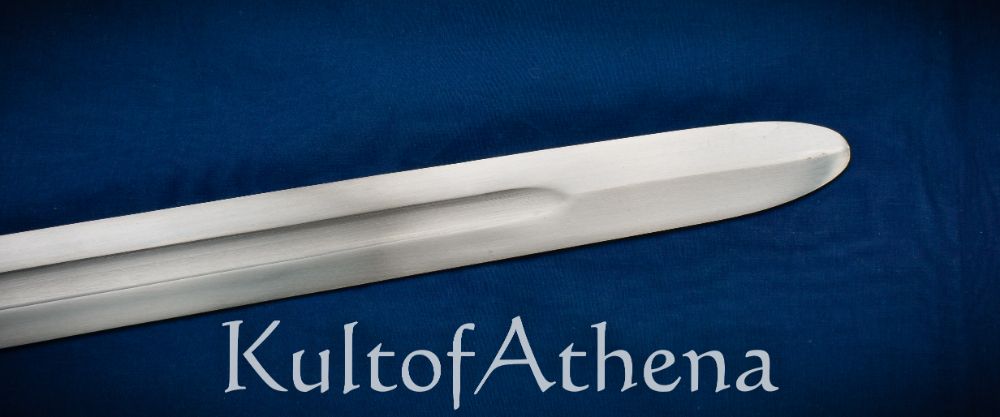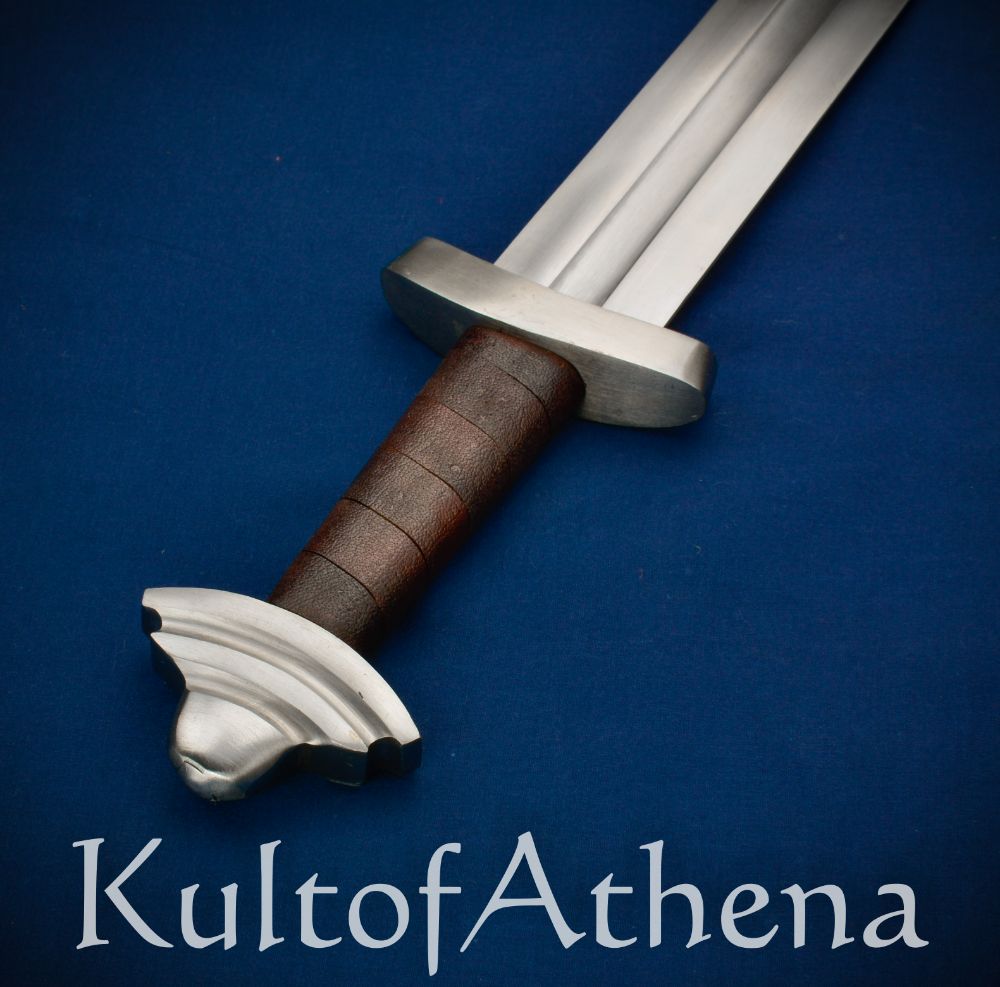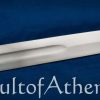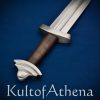The sword has always been a highly personalized weapons, but perhaps never more so than the Viking Age. A great sword was a spectacular investment in money and materials – treasured heirlooms, good blades were passed from father to son. Many swords were given names and personalities – such as Leg Biter Life-Taker and Byrnie-Biter. Masterly crafted swords were so superior to more crudely constructed blades that it was easy to believe that the typically secretive smith who made them had imbued his work with magic, making it quick of draw, fast to strike and holding a keener edge. The success a excellent weapon brought a skilled warrior brought life into the legends they wove around their named blades.
Unlike the axe, spear and bow which had utility purposes outside of battle, the sword was a tool solely in the province of war. Such an expensive and specialized weapon marked its bearer as a professional, dedicated warrior.
Many early Viking swords appear to have a foreign origin – as many blades bear the marks Ulfberht and Ingelrii – two swordsmiths or group of smiths that seem to have been based in the lower Rhine. Perhaps they were regarded as higher quality imports and the amount of blades found bearing their inlaid iron mark is made all the more likely as a more expensive sword was likely to be cared for a longer time then more crude workaday blade. The name must have had some connotation to higher quality, as there are some obvious, cruder forgeries bearing their mark. Even then, con-men made knock-offs of luxury products!
The workmanship and storied legend of the Viking sword made it the likely weapon of champions and heroes in a world of tumult and toil. Even today, that awe of mysticism is preserved in these dark age blades that recall the epic tales and sagas of those that used them.
This Deepeeka 11th Century Viking Sword is made of high carbon steel. The crossguard and pommel are of steel and the grip is tightly wrapped in form-fitting brown leather. The wood-core scabbard is likewise covered in tightened leather and has two antiqued buckles to affix the scabbard to a sword belt.


















Reviews
There are no reviews yet.